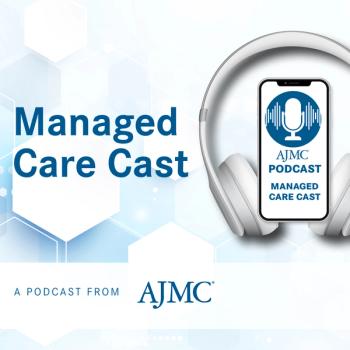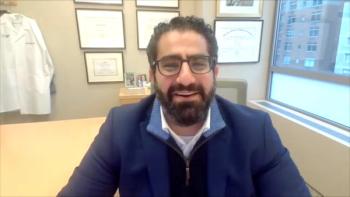
Understanding and Mitigating the Financial Burden of Cancer Patients
Drug costs are a significant contributor to rising healthcare costs, along with the cost of healthcare services. How can providers and patients work together to find a solution to this problem?
Healthcare is getting expensive by the day, and there’s growing awareness among patients as well as providers of the unsustainable nature of this growth. Drug costs are a significant contributor, and have developed into the fastest growing segment of healthcare costs—however, the cost of healthcare services is also a burden on the patient’s wallet. So what can providers do? What can patients do? An Education Session on the second day of the annual meeting of the American Society of Clinical Oncology, being held in Chicago, June 3-7, 2016, delved into these problems, their impact on patient behavior and clinical outcomes, and suggested potential solutions.
The session was chaired by Veena Shankaran, MD, MS, a health policy researcher at the University of Washington. She was joined by Dawn L. Hershman, MD, MS, who heads the Breast Cancer Program at Columbia University Medical Center, and Yousuf Zafar, MD, MHS, a health policy researcher at Duke University Medical Center.
Shankaran, who authored an article on financial toxicity in
“Cancer drug spend, as well as cancer care spending surpasses overall healthcare spending, and simultaneously, annual insurance costs are rising at a steady pace,” Shankaran said. She showed data that the combination of premiums and out-of-pocket (OOP) costs rose from about $3000 in 2008, to more than $5000 in 2015. Patients are facing higher copays and coinsurance, while access to treatment has barriers, defined by restrictive prescription plans and 4-tier drug formularies. “This is particularly important in oncology where there’s been a sharp rise in the approved of oral anticancer agents.” Shankaran shared data that showed the total annual spending per user is significantly higher in cancer ($80,466) over non-cancer ($21,048) treatments, and the average annual beneficiary cost share for cancer patients is about $6000 greater.
When comparing the out-of-pocket spending for cancer patients, a study by the LIVESTRONG foundation found that across a variety of insurance plans, a greater percentage of cancer patients spent more on their medical expenses compared with patients with other chronic conditions.1
“Financial toxicity is a constellation of symptoms. Patients face difficulty meeting household expenses, they face financial stress/strain, loss of employment and income, debt, and bankruptcy.” This can also take a psychological toll on the patient and impact their quality of life.
It’s important to consider what factors predispose cancer patients to financial toxicity. Research by her own group at Fred Hutch has identified several such risk factors:
- Younger age
- Lower income
- Non-white
- Advanced/aggressive cancers
- Comorbidities
- Lack of supplemental insurance.
She stressed that younger age seems to be the most significant risk factor!! And what this could ultimately lead to are the impact on clinical outcomes, resulting from issues with adherence, access, and trial participation, finally resulting in reduced survival.
According to Shankaran, we need a multifaceted solution to this problem, and lowering drug prices alone cannot mend the damage. A combination of short- and long-term interventions that include policy makers, to patients, to providers, and payers are necessary. These would include addressing:
- Sustainable drug pricing
- Cost transparency
- Communication on costs
- Financial counseling/navigation
- Medical debt reform
- Changes within the Affordable Care Act.
Dawn L. Hershman, MD, MS, who heads the Breast Cancer Program at Columbia University Medical Center, addressed adherence issues that crop up as patients try to cope with their copays and out-of-pocket costs. During her talk, Medication Compliance and Out of Pocket Costs, Hershman focused on the high OOP of oral medications.
“Adherence is s a global issue and in developed countries—studies have shown that adherence in chronic conditions is only about 50%,” Hershman said.
But adherence is a difficult outcome to measure, and patients are our best source of information, Hershman said. “But that information cannot be very reliable. We can also use EHRs, or use microelectronic monitoring systems to follow patient adherence to their regimen.” She suggested several points of intervention, including toxicity, cost, and behavior, adding “cost is the most modifiable risk.”
Does cost impact adherence? Hershamn said that her group studied the relation between copayment and non-persistence and identified an inverse correlation between the 2 variables. Specifically, in a cohort of patients older than 65 years, if the monthly OOP spending on a 90-day supply of their medication exceeded $30 per month, significant non-adherence was observed.
They has similar observations on once a month prescriptions: those who spent less than $10$ per month had better adherence than those who spent greater than $20 per month. Additional determinants of adherence were generic versus brand-name drugs and the household income.
“We need to strike a balance between cost of drugs and innovation,” Hershman said. One immediate solution is the Cancer Drug Coverage Parity Act (2007), which states that patients should not pay more for oral drugs over IV infusions. “While a few states have adopted this act others are thinking about it as well, and there could be a change seen soon.”
Yousuf Zafar, MD, MHS, a health policy researcher at Duke University Medical Center, who has coined the term “financial toxicity,” made the final presentation. His solution to this burgeoning problem is innovative benefit designs and changes to reimbursement.
“Toxicity can impact patient well being, quality of life, and the quality of care. All together it can worsen patient outcomes.” So while we think about clinical toxicity, we also need to think of reducing the burden of financial toxicity, Zafar said. “We should think of financial toxicity as a symptom. Treating the symptom at an individual patient level is much more manageable to handle than a system-wide change in policies.”
He had some suggestions for reducing financial burden:
1. Think about the value of what we prescribe. Avoid low-value interventions (follow ABIM’s Choosing Wisely recommendations).
2. Think about shared goals-of-care discussions
Zafar told the audience about “Finance,” a financial assistance, navigation, communication, and education tool that his group is in the process of fine-tuning. “It provides patients with insurance information, helps them understand their insurance coverage, helps guide their discussions with oncologists, and helps them navigate sources of financial help,” he said.
Zafar also stressed the importance of following a patient’s financial distress over time. While 52% of patients want to talk to their oncologists about their financial problems, only 19% did have a discussion. “When we asked those 19% if the discussions with their oncologist had an impact on their OOP costs, 57% said ‘Yes.’ How did this happen? Several factors influenced the OOP numbers, including the physician making a case with the insurance company, as well as the patients making a more informed decision on their health coverage.
Reference
1. Banegas MP, Guy Jr GP, de Moor JS, et al. For working-age cancer survivors, medical debt and bankruptcy create financial hardships. Health Aff. 2016. 35(1):54-61. doi:10.1377/hlthaff.2015.0830.
Newsletter
Stay ahead of policy, cost, and value—subscribe to AJMC for expert insights at the intersection of clinical care and health economics.















































